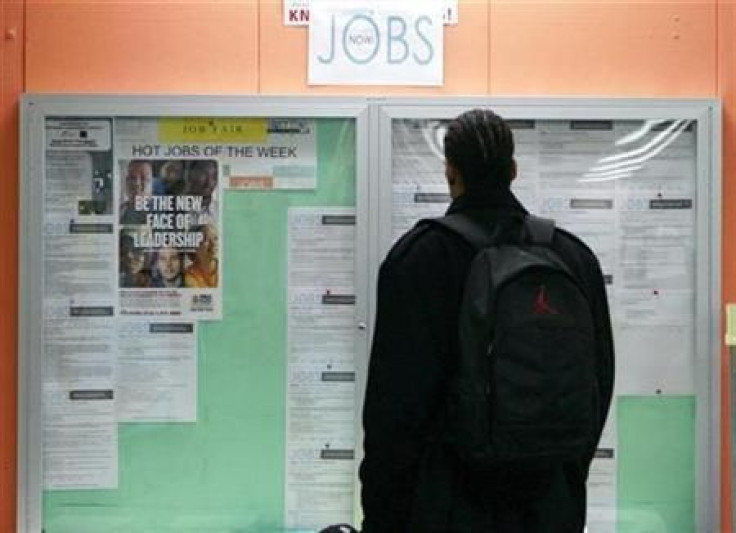Analysis: US unemployment recovery in December just an abberation?

Many of the U.S. economic indicators, including the unemployment data on Friday, over the past few weeks have given rise to the false belief that the economy is finally improving.
Unemployment in the U.S. fell by 0.4 percentage points to 9.4 in December, if the latest job report by the U.S. Labor Department is to be believepercentd.
The drop, economists believe, is not really sustainable.
The decrease in the labor force and an increase in employment on a household survey mainly pushed the unemployment figures lower in December. In reality, there were fewer-than-expected nonfarm jobs created during the month.
December's drop looks somewhat suspicious and may be partially reversed in coming months, Mark Vitner, an economist at Wells Fargo Capital, said in a note.
Initially, economists had estimated that about 200,000 jobs need to be created every month for the unemployment rate to really drop, given the number of new people entering the workforce. But with the recent data indicating that more people are choosing to stay out, there are other factors to consider in the employment rate.
If employment conditions were truly improving, job seekers would rejoin the workforce, pushing the participation rate higher, Vitner said.
In addition, it is possible that the fall in the labor force is due to the long-term unemployed being more willing to admit they are not actively looking for work after their extended benefits expired last month, Paul Dales, an economist at Capital Economics, said in a note.
Jobless benefits are awarded to people for 99 weeks. Many have used up this quota of unemployment, leading to reports of a drop in initial jobless claims every week. However, the Congress has agreed to reinstate the extended benefits, given the high rate of unemployment, which could result in the jobless rate going up again in January.
The historic rise in long-term unemployment has likely caused the skill set of many workers to atrophy, making them less employable, Wells Fargo's Vitner said, adding that even after such workers find a job, their productivity remains low as it takes quite some time for them to be brought back up to speed after suffering from long bouts of unemployment.
Vitner said that about 6.44 million workers are currently unemployed for 27 weeks or more - the most since the post-World War II period.
Workers in the U.S. are also less mobile, as mortgage rates soar and selling a house to relocate no longer remains an easy job.
If workers are unable to relocate to where jobs are, hiring will be slower to bounce back, he added.
Additionally, companies that are hiring in the current environment have much space to add additional hours to full-time employees before they look outward again to boost headcount.
Given the lingering uncertainty in the U.S. economic recovery, many companies might choose to employ temporary workers to fill the gap, rather than investing in full-time employees who are more expensive in terms of insurance and benefits.
Staffing company Manpower Inc said that companies are beginning to take on more permanent staff as they face more demand for their goods and services, and temporary jobs continue to be created as firms see a need to generate more product.
Temporary hiring, which typically precedes an uptick in permanent employment, increased 15,900 following a surge of 31,100 in November, the company said in a statement.
Unadjusted temporary jobs, which are more indicative of actual results, were up 16.3 percent from last year, with annual growth slowing, though still solid, Jeffrey Silber, an analyst at BMO Capital Markets, said.
Given the popularity of temporary workers and uncertainty in the markets, most economists expect future declines in the unemployment rate to be more gradual.
U.S. Federal Reserve Chairman Ben Bernanke warned on Friday that it could take years before unemployment falls to normalized levels, justifying the need for its $600 billion bond buying scheme.
[With] employers reportedly still reluctant to add to payrolls, considerable time likely will be required before the unemployment rate has returned to a more normal level, he said in a speech before a congressional committee on Friday.
President Barack Obama held a meeting last month with several chief executives from top U.S. companies, urging them to boost hiring.
Job creation is crucial to economic growth, as it forms the backbone of consumer confidence as well as spending.
Heightened competitive pressures, fueled by globalization and other factors, mean that economic growth is now more capital intensive than it was in previous recoveries. As a result, GDP has to increase even more than it did in the past in order to create jobs, Wells Fargo's Vitner said.
Economists remain on watch for unemployment trends as well as consumer spending in January to know if the economy is really on a path to recovery and if the Fed will finally stop its asset purchases to let the recovery happen on its own strength.
© Copyright IBTimes 2024. All rights reserved.











